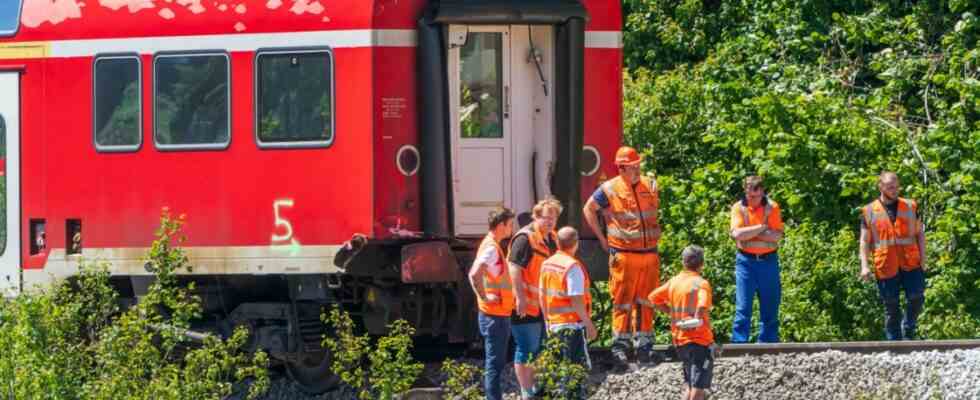After the train accident a month ago in Garmisch-Partenkirchen with five dead and many injured, it is becoming apparent that damage to the route could have led to the accident. A document from the Federal Ministry of Transport mentions defective concrete sleepers. Some of the sleepers in this section of the route had “apparently horizontal breaks”. Under the weight of the double-decker regional train, a rail is said to have bent outwards. This could have caused the train to go off track and derailed several carriages.
If that was actually the case, then the accident would ultimately be a consequence of the rail network in Germany, which in some cases was in dire need of renovation. Apparently, in order not to risk any further accidents, the Deutsche Bahn (DB) then set up additional slow-moving points (La points) on numerous routes due to superstructure defects. The state-owned company DB does not comment on this. However, it is considered certain that the railways want to take double precautions after the train accident.
In the case of superstructure defects, rails, sleepers or the track bed are no longer in order. Trains are then only allowed to drive slowly at the relevant points, sometimes at a leisurely pace of 20 kilometers per hour. According to a current directory, in June the railway also set up so-called slow-moving stations on the route from Munich via Garmisch-Partenkirchen to Mittenwald, which is largely single-track from Tutzing on Lake Starnberg. Also affected are the lines from Munich to Rosenheim or in the Oberland near Bad Tölz or between Schliersee and Bayrischzell as well as some other routes.
The CEO of Deutsche Bahn, Richard Lutz, said a few days ago: “We don’t make any compromises when it comes to safety.” This in turn raises the question of what exactly happened at Garmisch-Partenkirchen. Defective sleepers are usually discovered during regular inspections. This in turn means that there are slow-moving sections that vary in length depending on the location. Sometimes 50 meters, sometimes 100 meters, sometimes several hundred meters or even several kilometers.
The train drivers get order number 12
If such La-points are not yet signposted and are not yet included in the daily La-list of the Deutsche Bahn, then the engine drivers receive the so-called order number 12 before the journey. This order states that the train can only pass the point in question with reduced speed or even has to be driven “on sight”. The Munich II public prosecutor’s office is investigating what exactly happened on the regional train that crashed.
The public prosecutor’s office is investigating in all directions, but is currently concentrating on the condition of the route. This is shown by the fact that the section in question is still being examined and has not yet been released for repair. How long the on-site investigations will take is not yet foreseeable. The route will remain closed until further notice.
In addition to the public prosecutor’s office, the Federal Office for Railway Investigations (BEU) is also active. The BEU has the task of clarifying the “causes of dangerous events in railway operations”. This should lead to avoiding future accidents and making rail travel even safer. The BEU is subject to the overall and legal supervision of the Federal Ministry of Transport, but acts autonomously and independently in its investigations.
The need for rehabilitation of the rail network is undisputed
So far there has been no report from the federal agency on the accident near Garmisch-Partenkirchen, the investigations are ongoing; as well as the prosecutor’s office. The documents of the Federal Ministry of Transport are initial, preliminary findings. Damage to the train that could have led to the accident is now apparently largely ruled out. Depending on what comes out at the end, the need for rehabilitation of the rail network in Germany could continue to increase.
Matthias Gastel, member of the Bundestag for the Greens, refers to this. The transport politician says that if defects on the route led to the accident, it must be examined carefully and quickly to what extent this could also affect other routes. And to what extent the federal government would have to spend additional money on the renovation of the rail network. “One thing is certain: the need for network rehabilitation is currently increasing, and in total it currently amounts to around 50 billion euros.” The need for rehabilitation “basically does not go hand in hand with security deficiencies in the network,” but could lead to further slow-moving sections.

